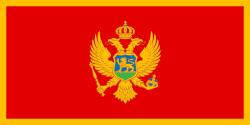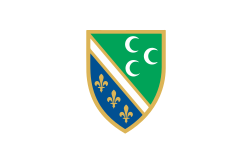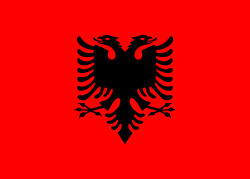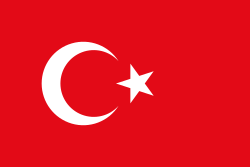| Flag | Date | Use | Description |
|---|
 | 2006–present | Flag of Podgorica | Two horizontal blue stripes and one broken line above two horizontal stripes on white background |
 | Flag of Cetinje | White cross pattée on red background |
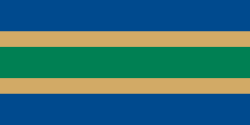 | Flag of Bar | Horizontally divided blue-yellow-green-yellow-blue |
 | Flag of Berane | Municipal coat of arms in the center on a white background |
 | Flag of Bijelo Polje | Light blue background with the coat of arms of the municipality in the center |
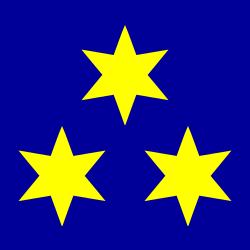 | Flag of Budva | Blue background with three golden stars |
 | Flag of Danilovgrad | White background with the coat of arms in the center |
 | Flag of Gusinje | Light blue background with the coat of arms in the center |
 | Flag of Herceg Novi | The coat of arms of the municipality consists of a blue heraldic triangular shield on which is a silver stone-walled tower with a parapet. The flag consists of a white field with a centrally placed upright cross, blue outlined in gold. |
 | 2009–present | Flag of Kotor | The flag is bicolor, with a small emblem located in the center. The flag field is divided into two square panels in equal proportions, white at hoist and red at fly. Red recalls the main colour of the arms. The geometric center of the flag is charged, with the lesser arms placed on a medallion. |
 | 2012–present | Flag of Mojkovac | The flag is monochromatic, in bluish color, with a golden edge and elements of the coat of arms (the monument, a Brskovo coin, and two mining hammers and the Old Bridge), which reflect the cultural and historical heritage, located in the center of the flag's field. |
 | 2004–present | Flag of Nikšić | The flag is blue with the municipal coat of arms. |
 | 2013–present | Flag of Petnjica | The flag is white, with the emblem of the municipality in the center. The blue line near the bottom of the flag symbolizes the water resources of the municipality. The green line near the top of the flag symbolizes the natural environment of the municipality, with well-preserved landscapes and fertile land. |
 | 2006–present | Flag of Plav | Blue, embroidered in gold, with embroidered emblem in the center |
 | Flag of Rožaje | The flag is vertically divided white-green with the municipal coat of arms in the center. White stands for peace, while green stands for the natural resources of the municipality. |
 | Flag of Šavnik | Divided blue-white with the coat of arms in the center |
 | 2004–present | Flag of Tivat | The municipal flag is light blue with the coat of arms in the center. |
 | 2018–present | Flag of Tuzi | The municipal flag is light blue with the coat of arms in the center. |
 | 2006–present | Flag of Ulcinj | The municipal flag is white with the coat of arms in the center. |
 | Unknown | Flag of Žabljak | The municipal flag is white with the coat of arms in the center. |

